Our showroom is open to the public. Please click HERE for more details.
Our showroom is open to the public. Please click HERE for more details.
Stairs have been used since the dawn of civilization and are often constructed of stone, wood, marble, iron, and steel. Access to higher levels of a house, which were then caverns, was gained by stacking flat rocks or logs together. Staircases have undergone several modifications over time, but their basic structure and shape have stayed the same.
One design that’s been gaining popularity in recent years is the floating staircase. Floating staircases have a contemporary appeal that is perfect for open-concept spaces and benefits both residential and business structures alike.
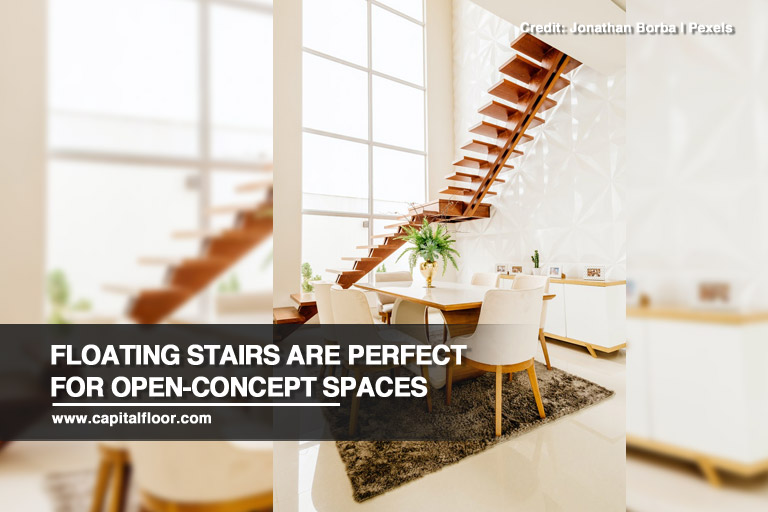
Engineers and architects have been working for years to improve staircase designs so that they are lighter and take up less space. This is how floating staircases came to be.
The term “floating stairs” refers to steps with hidden and recessed forms of the cantilever. The objective is to conceal the structure or stringer attached to the stairs so they look as if they are floating in thin air.
Floating staircases are best known for their modern look and may be installed outdoors and indoors. This style can be combined with a variety of handrail and railing alternatives. To give the illusion of floating, these staircases are frequently installed with cable, glass, or rod railing. They are designed to maximize living spaces while maintaining a distinct and modern style.
Unlike regular staircases, which take up a lot of room, floating staircases create a light and airy ambiance. It’s also ideal for those who prefer a more minimalist and modern design and is quite suitable for smaller homes.
It’s the simplest and most minimalist approach. The stairs are simply fastened to the wall.
Attaching the stringer to a wall and having it run down the steps is the most typical method.
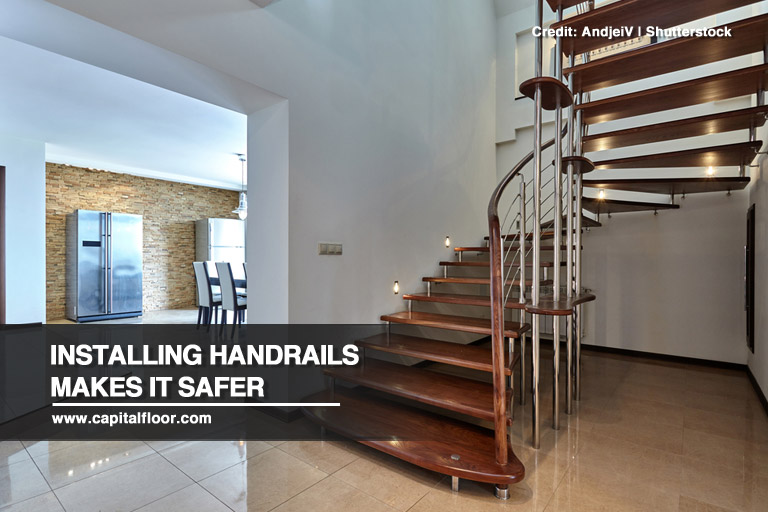
If you’re going for a minimalist look in your home, having no railings on your stairs may be appealing, but it’s not particularly safe. Handrails make it safer for you and your family to use while providing support for the staircase.
Creating the ideal floating staircase is difficult. There are numerous things to consider because it lacks the same support as standard staircases. Despite the difficulties encountered during its design and implementation, we cannot dispute that the benefits outweigh the drawbacks.
Here are five advantages of floating staircases that will persuade you to make that decision and take your home design to the next level.
1. Space Saver and Space Creator
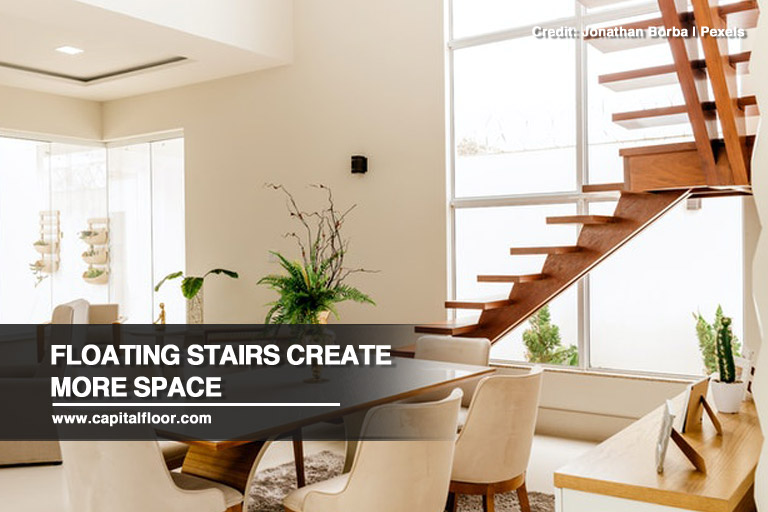
Because this style of design has no support on both ends, it takes up the least amount of space possible. It also prevents various items and materials from obscuring the view between rooms and living areas because it does not require a lot of materials to support it. Furthermore, the lack of necessary support beneath it allows for additional open or storage space.
So, if you’re looking for a modest storage area or a little reading nook, consider floating steps in your design plan.
2. Versatile
One of the most essential advantages of floating stairs is that they are versatile. It can be installed in a variety of methods, depending on the amount of space available for stair installation.
Floating stairs come in a variety of shapes and designs, including:
Naturally, you’ll have a lot of options for railings and stair treads if you go with these options. While hardwood stairs are most commonly utilized by people who want to give their interiors a sleek and modern aesthetic, you may also use alternative materials such as concrete.
3. Adds Flair and Design
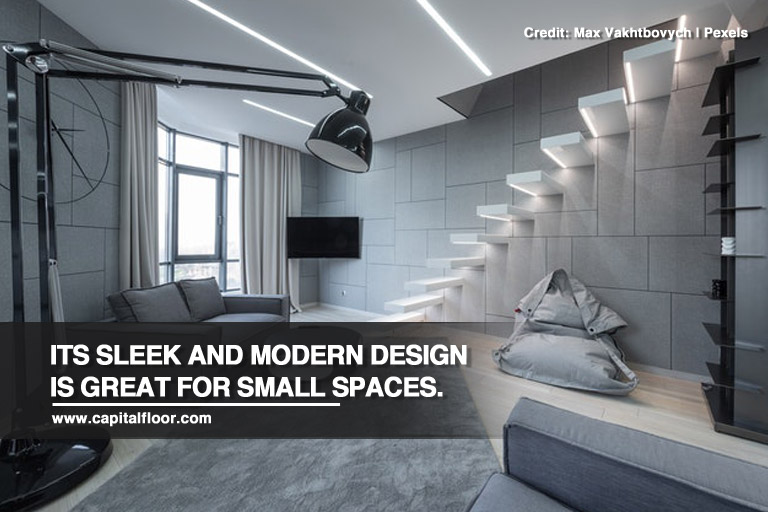
Because the staircase appears to float, it makes the room seem lighter. It features a striking design that will attract the attention of everybody who comes to your home.
Here are some materials that you may use to help you achieve the aesthetic you want.
4. It’s Safe
Are floating stairs safe? For families with small children, floating staircases may seem a bit dangerous. However, it doesn’t have to be. In fact, some engineers consider floating staircases to be safer because they must follow the International Residential Code Standards (IRC).
Each stair tread should be able to support a concentrated force of 200 pounds, according to the IRC. Because floating stairs do away with risers in order to achieve that minimalistic look, you’re left with nothing but open space. According to IRC standards, open risers can’t be more than 4 inches wide. This was written with small toddlers in mind. As a result, children tall enough to mount stairs will not fall through the gaps between the risers.
It’s always a good idea to think about weight, fall-through, and slide problems when considering floating staircases.
There are also several ways to make the floating stairs in your home safer.
5. It’s More Affordable
You may save a lot of money by choosing floating stairs. This is mostly due to the fact that the majority of the materials utilized in the installation can be purchased locally. Furthermore, because there are a variety of materials to choose from, you have more options to determine what is best and least costly for your home. Because it is easier and faster to install, labour costs are also reduced.
International building codes demand that each step of your floating staircase must be able to carry 200 pounds of concentrated weight.
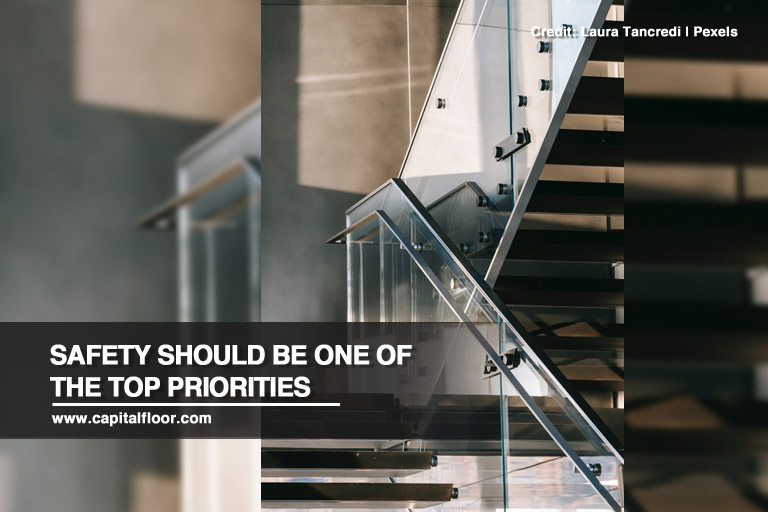
It’s vital to determine what’s ideal for your home and how to attain it whether you’re building a new home, renovating, or upgrading. It’s also critical to have the highest-quality materials for your property.
Floating stairs will also provide your property with an unrivalled look as well as various advantages. Its sleek and simple design gives a one-of-a-kind and fashionable look for any environment, whether small or large. Keep in mind your family’s safety as well. Always seek the advice of an expert.
Consider the following factors before deciding on a staircase design and having it built or installed in your home.
1. Budget – The materials and professional level you can use will be determined by your budget. Always examine your budget to ensure that both material and quality are not compromised.
2. Space – Because stairs take up so much room, your chosen design might not be the best fit for your space. Consider the size of your area and the numerous staircase designs before deciding which one is ideal for you.
3. Safety – Whether you have youngsters or the elderly in your home, safety is critical when choosing a staircase design. Check to see if your contractor is adhering to the building codes.
4. Materials – When it comes to constructing a staircase, there are a variety of materials to choose from, and it’s not as simple as deciding which one looks best. You must take into account environmental and occupant considerations. For example, if you live in a termite-prone location, an all-wood staircase may not be the greatest choice.
Always remember that your staircase is more than just decorative. It must also fulfill its function. Make certain you have the correct people on your team.
If you’re looking to install a floating staircase for your Toronto home, contact Capital Hardwood Flooring at 416-536-2200 to book your appointments or visit our showroom at 1015 Dupont Street Toronto ON M6H 1Z7.